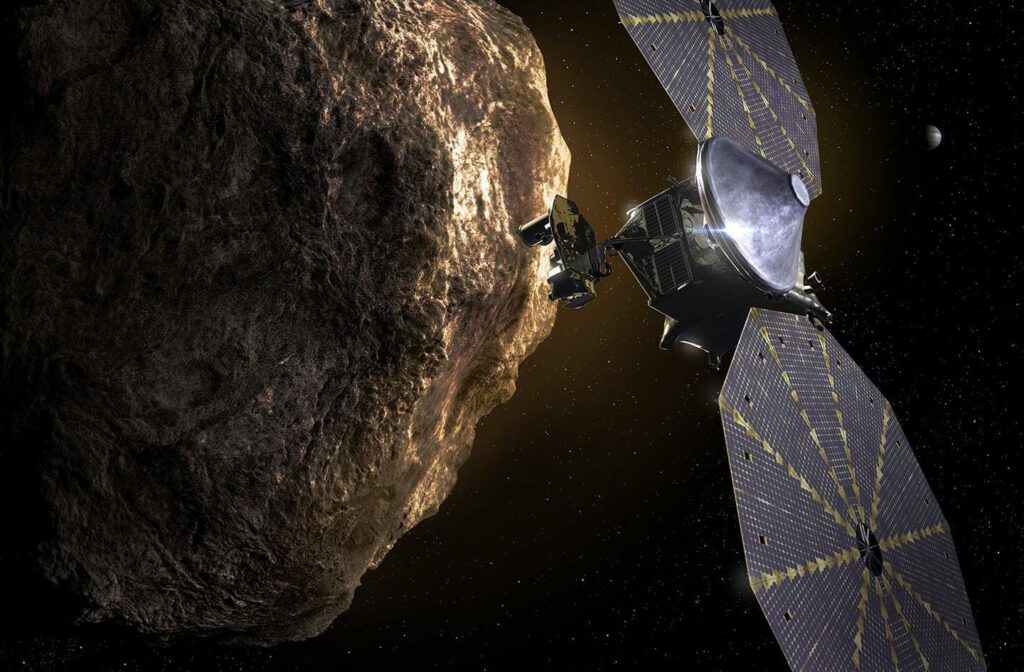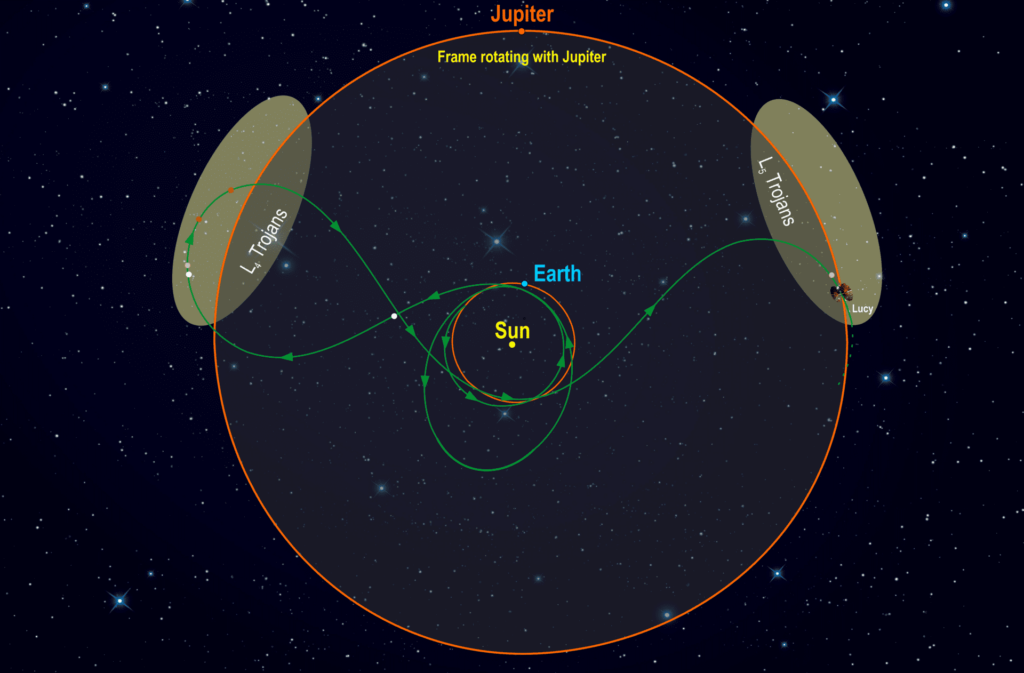On October 16, the Lucy spacecraft will fly at a distance of only 350 km from the Earth’s surface. During this maneuver, the Earth messenger will use the gravity of our planet to gain some of the speed necessary to achieve the goals of its mission.
Tasks and technical problems of the Lucy mission
Lucy went into space in October 2021. The device is designed to study Trojan asteroids in the Jovian orbit. This is how astronomers call two large groups of asteroids that are constantly located in the vicinity of the Lagrange points L₄ and L₅ of the Sun-Jupiter system. The mission plan is designed for 12 years, during which Lucy will have to visit at least nine small bodies.

Shortly after the launch, Lucy ran into technical problems. One of its two round solar panels with a diameter of 7.3 meters did not fully open. This raised concerns about the structural stability of the probe during maneuvers using the main engine. Therefore, engineers carried out a number of operations to deploy the jammed segment. According to the mission’s management, the measures taken made it possible to deploy a large part of the jammed segment and give it greater stability. This gives hope that the solar battery will not become a source of problems.
Meeting with the Earth
During the upcoming gravitational maneuver, Lucy will approach the Earth, moving from the direction of the Sun. Because of this, ground observers will not be able to see the device on approach. At the same time, Lucy will have the opportunity to take a photo of the fully illuminated Earth and Moon. They will be used to calibrate its instruments.
It is worth noting that Lucy will pass through the region of near-Earth orbit with the highest concentration of satellites and space debris objects. Therefore, NASA has developed a backup plan. In the event of a collision risk, the probe will perform an evasive maneuver.
In addition, Lucy will be exposed to the upper layers of the earth’s atmosphere. Since it can have an impact on its problematic solar battery, in order to insure the mission management has made changes to the flight plan, increasing the height of the flight by 50 km.

If the upcoming rendezvous takes place normally, Lucy will visit Earth again in December 2024. The second gravitational maneuver will direct it to the population of asteroids located in the vicinity of the Lagrange point L₄ of the Sun-Jupiter system. In 2030, the probe will return to Earth for the third time. This time it uses its gravity to head towards asteroids in the vicinity of the Lagrange point L₅.
According to https://www.nasa.gov
Follow us on Twitter to get the most interesting space news in time
https://twitter.com/ust_magazine

